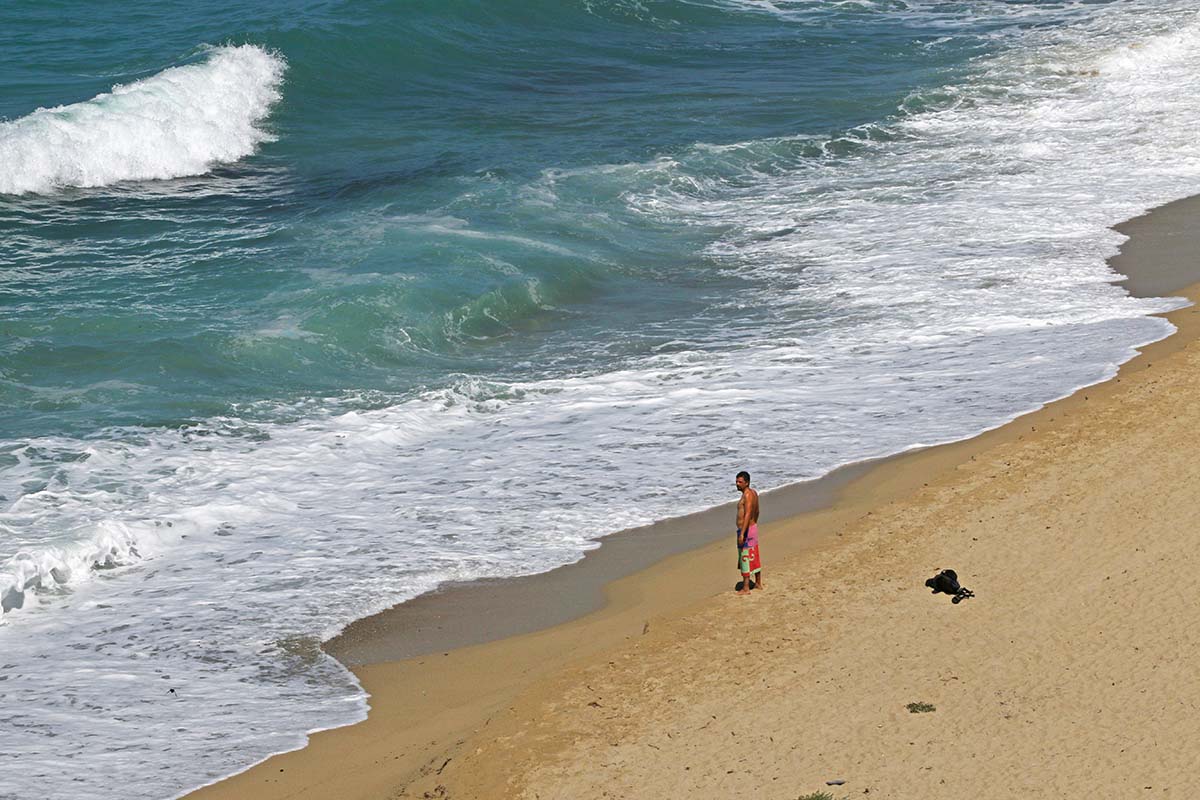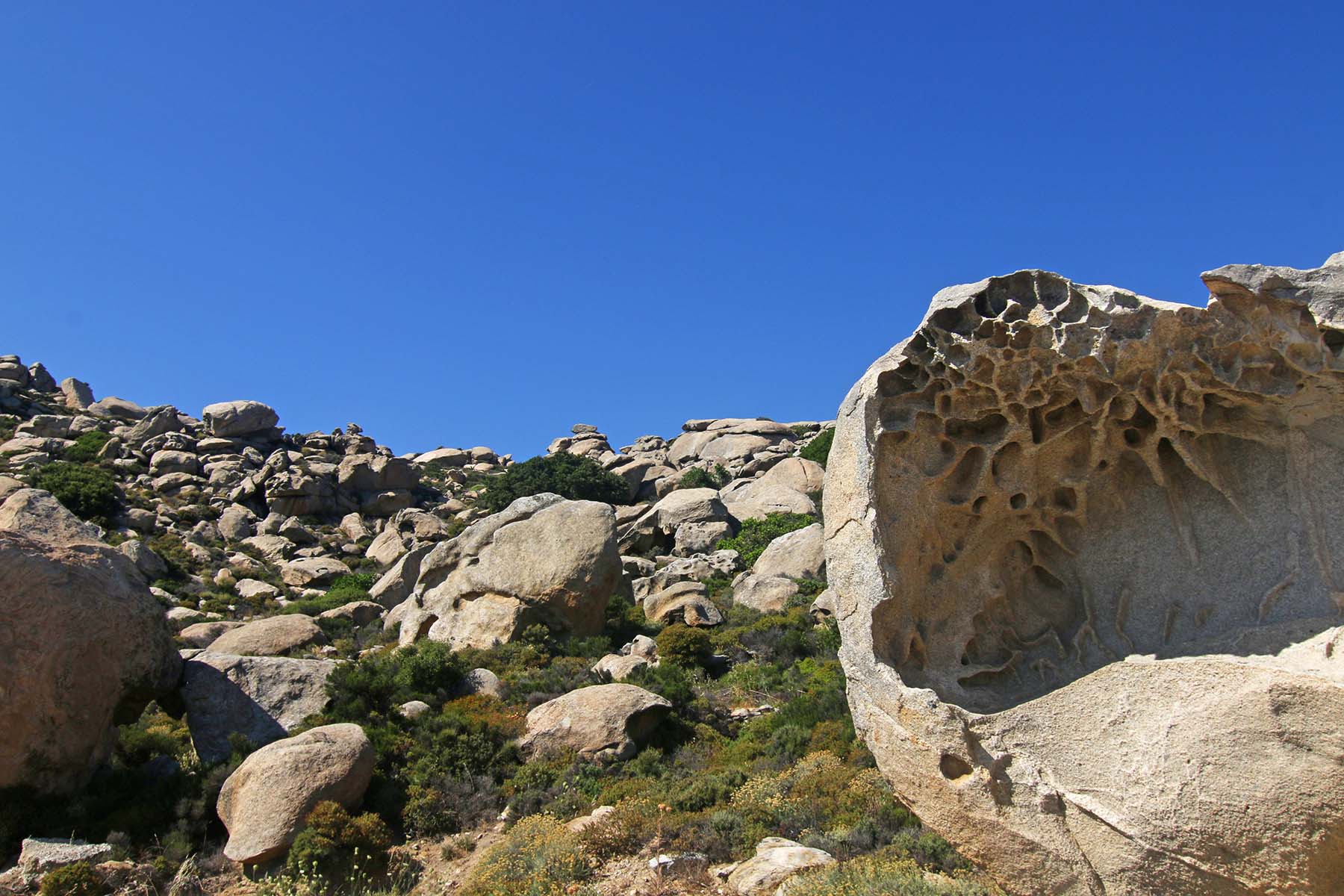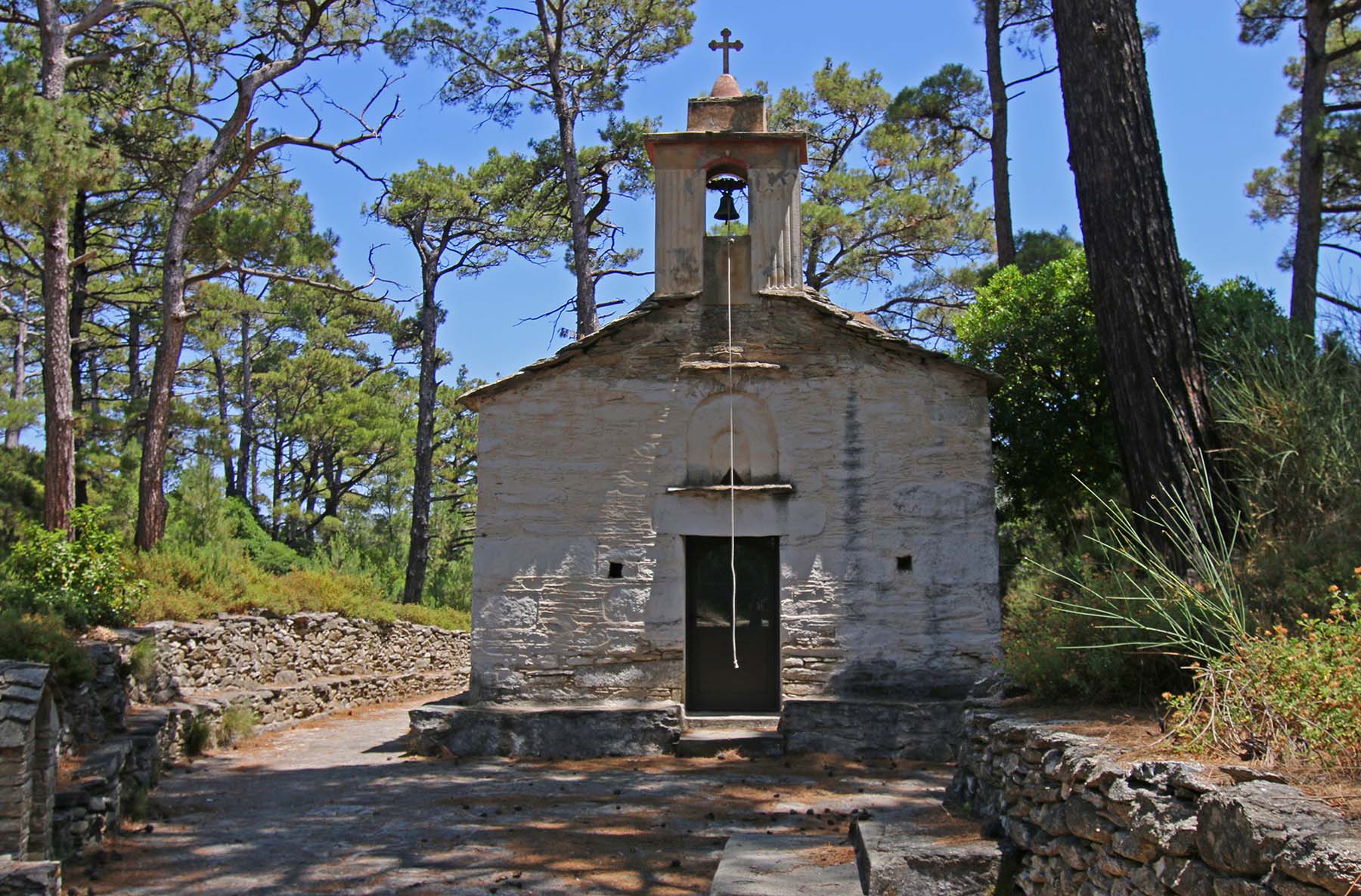- info@anemiapartments-ikaria.com
- +30 22750 71190
Αttractions - Anemi

Agios Kirikos & Katafygi. Agios Kirikos is the capital and the port of the island and it is amphitheatrically built on the southeastern coast. In the middle, on a hill, stands the neoclassical building that houses the Police and the Port Authority. The Town Hall is housed in a similar building. Other interesting buildings are the Cathedral and the church of St. Nicholas, which was built with money from the seafarers of the island. In Katafygi, north of Agios Kirikos, visit the church of St. Demetrius. According to tradition, the trapdoor beneath the sanctuary leads to a cave which was the locals hide-out at the years of the pirate raids.
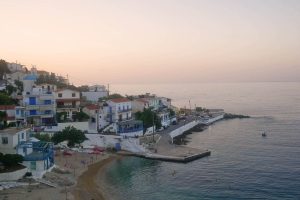

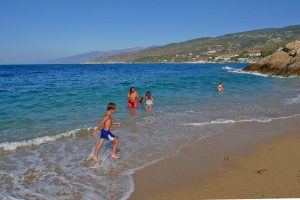
Armenistis. A small fishing village in the northern part of Ikaria, with a picturesque harbor. Recently it has become very popular to visitors –but without loosing its authentic identity. It is very close to the famous Nas, Christos Rachon, as well as the large beaches of Messakti, Livadi and Gialiskari. Due to this tourist development, there are many hotels, rooms to let, restaurants, cafe-bars, a mini market etc. In the settlement you will see the harbor area, with its marine and fishing boat and a church dedicated to Agios Nikolaos, patron saint of sailors. Around Armenistis there are dense pine wood forests, small rivers and streams. It is also an ideal starting point for hikers.
Thermal Springs. Ikaria is known for its unique healing springs, which are considered among the most radiant springs in the world. The best known are the Asclepius radio spring in Agios Kirikos, with a water temperature of 40 degrees and a hydro spa, and the springs in Therma with water temperature 48-54 degrees and hydro spa. The ancient city Thermae with their famous healing spings were just east of the current Therma and they were sunk by an earthquake during the Roman era. Remains of ancient baths of 400 BC have also been found there. The healing springs are suitable for treating rheumatism, spondylarthritis, phlebitis, nerve disorders, heart diseases, gynecological diseases, etc. On the island there are other hot springs in Artemis, Kratsa, Pamphili, Spilaiou, Athanatou Nerou, Apollonos, Agia Kyriaki etc. Information at:+30 22750 22202.
Ancient Drakano and the tower. Drakanon was an ancient city of Ikaria and it is considered the homeland of Dionysus. It is located in the region of Fanari, at the easternmost point of the island. Here you can admire the Tower of Drakanos and the remnants of the ancient citadel of the settlement which have survived, i.e. the ancient enclosure with traces of angular towers (5th century BC).
The imposing circular tower of Drakano, which is located on top of a hill, has a height of about 10 metres and was built in the 4th century BC during the reign of Demetrius. It was one of the 7 towers on the island used to quickly inform the residents in case of a pirate raid. It is said that the tower was burned by Admiral Stachtouris, in 1826, which resulted in major damages. The tower of Drakano is an important monument of antiquity and one of the highest in the Aegean.
Zoodochos Pigi monastery. It is situated near the settlement of Hristos, in Agios Kirikos. It was built in 1890 and it stopped operating in the mid 20th century. In the centre of the monastery is the church dedicated to Zoodochos Pigi, with wall paintings and an ornate wooden cross over the iconostasis. The cells are arranged in the southern and eastern part, while the west is dominated by an impressive wall. A gospel from 1872 and a functional tabloid dating from the mid 19th century are kept in the monastery. Previously, a watermill operated here. The monastery celebrates on the Friday after Easter.
Archaeological museum & archaeological site of Kambos. The archaeological site of Kambos is located about 45 kilometres northwest of Agios Kirikos, in the region of the ancient capital Oinoi. Oinoi was founded in 750 BC by the Miletians and it was continuously inhabited until the early Byzantine period. The village flourished mainly due to the production and export of the famous Pramneios wine, from which Oinoi received its name (oinos=wine). Due to the fact that the inhabitants worshipped Dionysus, it was also called and Dionysiada. During the Byzantine period sit exhibited new growth and it was renamed Dolichi. Important buildings that have survived are the Conservatory, a late antiquity building, the late roman aqueduct and the “Palatia”, an early Byzantine secular building. The archaeological museum of Kambos is found on the hill on which the archaeological site of Kambos lies. It hosts remarkable finds from ancient Oinoi, as well as from other excavations on the island. Admire the small clay statues, tombstones, Neolithic tools, vases, pottery, coins and grave goods. One of the most important exhibits of the museum is an ancient marble sarcophagus with engraved depictions. Opening Hours: Tuesday to Sunday: 8:30-15:00 (Monday closed), Tel: +30 22750 31300.
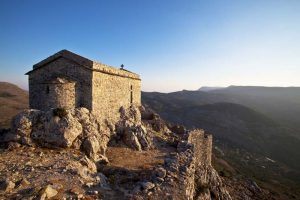
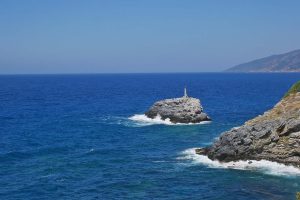
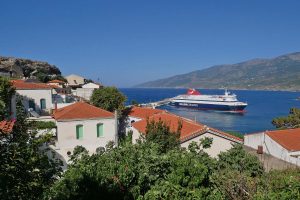
Koskinas castle. In the northern part of the island, near the settlement Kosikia is the impressive castle of Koskinas. It was the strongest fortress of the island and this is why it was also called castle Nikaria. It was built during the 10th century and it stands on top of a hill overlooking the namesake Koskinas hill. It is said that it was impregnable fortress and it was conquered only due to treachery after the 14th-16th century by pirates. Inside the castle there is the small church of St. George Dorganas. There is access to the castle through a small path that starts from the road Evdilos–Agios Kirikos. The view from the top is breathtaking.
Evdilos. This is the first state which was built on the seaside in the early 19th century. Few neoclassical houses still give that nostalgic feel and despite the fact that the narrowness of the roads is frustrating for some, this is what gives it its particular colour. This is where the Greek flag was raised for the first time in 1912. Eydilos is the centre of the northern side of Ikaria and the second largest port which is now becoming even bigger.
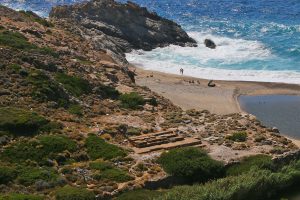
Archaeological site of Nas. Nas is located west of Armenistis and in the same place there was an ancient city where the Naiads lived, according to mythology. In ancient times one of the most famous shrines, dedicated to Tauropolos Artemis, was situated here. It was built in the 6th century BC and it was one of the most important places of worship on the island. Inside the temple there was a large statue of the goddess Artemis which has not survived since the temple was destroyed in the 18th-19th century and the materials were used to build churches. Only the floor and the foundation can be seen today. Next to the temple on the bank of river Chalari, there are remains of a quay of the harbor which was built by local residents in 14th-15th century.
Archaeological, folklore & historical museum of Agios Kirikos. The museum is located in a neoclassical building in the centre of the village. It houses the archaeological collection with findings from the archaic and classical period and folklore exhibits collected by the archaeologist and historian Themistocles Katsaros. The collection includes, inter alia, figurines of animals and mythical creatures, amphorae, perfume bottles, tools, utensils, weapons, coins, pottery and bronze vessels. One of the most important exhibits of the museum is the famous “Relief of Refuge”, an archaic headstone with engraved depictions, created by the artist Parianos. The folklore collection includes more than 1,500 exhibits, including folk costumes, textiles, looms, old utensils and tools used by the residents in traditional occupations (quern, bee-hives, oil mill, etc.). Opening Hours: Tuesday, Thursday, Saturday and Sunday: 10:00-14:00, Wednesday, Friday: 18:00-20:00 (Monday closed). Tel: +30 22750 31300, 24001.
Monastery of Agia Theoktisti. The monastery is located in the northern part of the island, near the village Pigi. Although its construction dates back to the early 16th century, there is an old sign setting October 1688 as its construction date. The monastery has 15 cells and ancillary areas. Inside the ledger, which is dedicated to Saint Theoktisti from Lesvos, there are significant frescoes which follow the athonite iconography style. The relics of Saint Theoktisti were kept in the monastery attracting crowds of worshipers. Very close to the monastery, in a cave, you will find the chapel of the monastery, the famous “Theoskepasti”, a stunning little church under a huge rock. The ornate wooden temple was built in the late 19th century. The monastery celebrates on November the 9th.
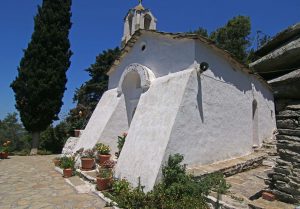
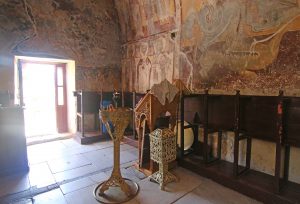
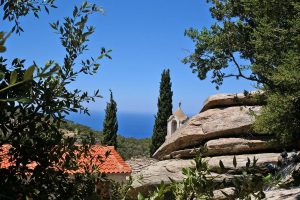
Monastery of the Annunciation of Virgin Mary Mounte (or Monte). The Monastery of the Annunciation is also called Mounte and Monte. For the name Mounte the explanation is that a family from Chios with the name Mounte financed the restoration of the Monastery, and for the name Monte that during the Italian occupation the Italians may have called it “Monastery of the Mountain” because it is located between the mountains and the Italian word for mountain is monte. The monastery is located in a green setting, between the settlements Frantato and Christos Rachon. According to an inscription outside the church, it was built in 1460 and it was renovated in 1893. It was used as a sanatorium for tuberculosis patients in the mid 20th century. The church consists of three small temples, each with its own entrance and an altar, dedicated to the Annunciation, the Assumption and the Holy Apostles. In the monastery there is a woodcut Epitaph of the early 20th century, built in Smyrna, Asia Minor. There are also significant icons of the 20th century, works of the famous painter Zosima, a wooden temple and two older photos. The monastery celebrates three times per year, on the Annunciation on March 25, on the Gathering of the Twelve Apostles in June 30 and on the Assumption on August 15.
Evaggelismos Mavrianou monastery. It is located on the seafront, near the settlement of Amalia. It was built in the late 18th century and from finds discovered in the area, as well as a marble column base, it is believed that an ancient temple or settlement used to stand in the location of the monastery. The monastery has 10 cells. In the small church, which is dedicated to the Annunciation, there is a carved iconostasis and a significant icon of Virgin Mary, works from 1820 to 1821. The monastery Mavrianou is celebrated on March 25.

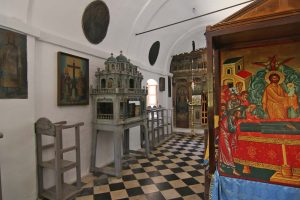
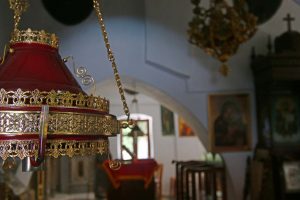
Chistos Rahon. Perhaps the most picturesque mountain village, Hristos Rahon, stays awake at night, since after around 10-11 at night, you will see all the shops open, from convenience stores to mini markets. This habit is said to have its roots in the age of the pirates. The truth is that this schedule has been a thing of the past 3-4 decades in Rahes, from when the residents had no cars and had to use animals for their transportation. Hristos was a central village. Then they started from every village and until they reached Hristos to do their chores it was already dark. The stores should be open to serve them, and the time schedule was established. Here lies the famous self service bakery, whose owner Nikolas (Kolias), kneads and bakes the bread in the morning, opens at 11 and … goes fishing in Eudilos! You take the bread, leave the money on the counter and go! There has never been any mention of theft…
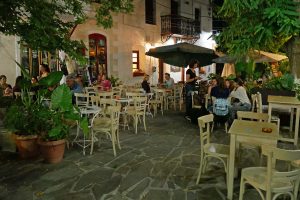
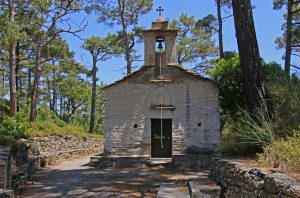

Info
The Ikaria Eleftheria is an art festival which takes place in late July, since the mid 1980s. As a continuation of the celebrations for the liberation of the island from the Ottoman occupation, the Ikaria Eleftheria includes book fairs, folk art exhibitions, musical events, folk poetry recitations, etc. in different parts of the island, but also on the island of Fournoi. The Cultural Organization of the Municipality of Evdilos in cooperation with other municipalities of Ikaria organizes an annual art exhibition for the local artists. There is no obligation or restriction in style, since the exhibits can be either traditional or modern art. The theatrical “Exodos Aigaiou” under the direction of director Nick Paroikos, who hails from the island of Ikaria, organizes annual ancient drama performances. The novelty lies in the fact that the performances usually take place outdoors in the impressive mountain scenery of Ikaria.
GALLERY

